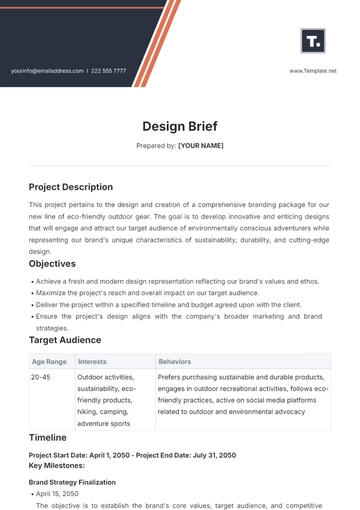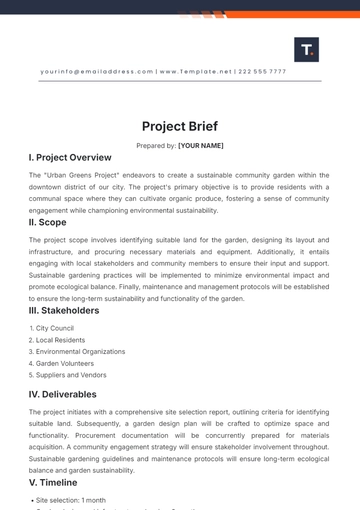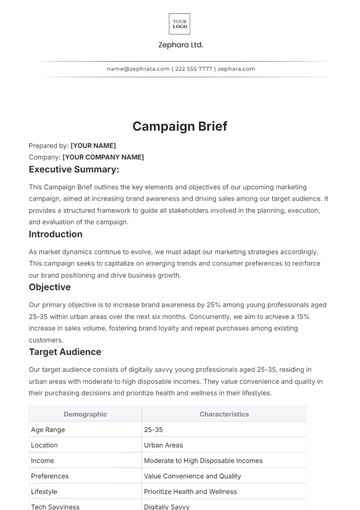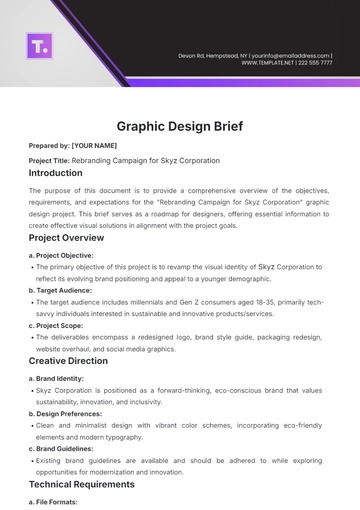Community Development Projects
Prepared By: [YOUR NAME]
Project Overview
The [Insert Community Name] Community Development Project aims to enhance the welfare, infrastructure, and services within the community to improve the overall quality of life for residents. The project focuses on addressing key areas of concern identified through community needs assessments and stakeholder consultations.
Project Objectives
Objective | Descriptipn |
|---|
Improve Physical Infrastructure | Upgrade roads, bridges, and utilities to enhance accessibility and connectivity within the community. |
Enhance Social Services | Expand access to healthcare facilities, childcare services, and recreational amenities to meet the needs of residents. |
Promote Economic Development | Support local businesses, create job opportunities, and stimulate economic growth through targeted initiatives. |
Foster Environmental Sustainability | Implement measures to promote environmental conservation, waste management, and green infrastructure. |
Strengthen Community Cohesion | Facilitate community engagement, participation, and collaboration to build social capital and resilience. |
Target Audience
The project targets all residents of the [Insert Community Name] community, with a focus on vulnerable populations, including low-income households, seniors, and individuals with disabilities.
Project Timeline
Planning Phase: [Start Date - End Date]
Implementation Phase: [Start Date - End Date]
Evaluation and Monitoring: Ongoing throughout the project duration.
Resources Required
Human Resources: Project management team, community organizers, volunteers.
Financial Resources: Funding sources, grants, sponsorships.
Physical Resources: Equipment, materials, infrastructure.
Key Stakeholders
Community Members: Residents, community leaders, local organizations.
Government Agencies: Municipal government, relevant departments.
Nonprofit Organizations: Community-based organizations, advocacy groups.
Businesses: Local businesses, chambers of commerce.
Project Activities
Conduct community meetings and surveys to gather input and prioritize project needs.
Develop a comprehensive project plan outlining goals, objectives, and implementation strategies.
Collaborate with stakeholders to secure funding and resources for project implementation.
Implement infrastructure improvements, social programs, and economic development initiatives according to the project plan.
Monitor progress, evaluate outcomes, and adjust strategies as needed based on feedback from stakeholders and project beneficiaries.
Evaluation and Measurement
Utilize key performance indicators (KPIs) to assess project impact and effectiveness.
Collect data on project outcomes, including improvements in infrastructure, access to services, economic indicators, and community satisfaction.
Conduct regular evaluations and stakeholder consultations to identify strengths, weaknesses, and areas for improvement.
Communication and Outreach
Maintain regular communication with stakeholders through community meetings, newsletters, and social media channels.
Provide updates on project progress, achievements, and upcoming events to keep residents informed and engaged.
Encourage community involvement and participation in project activities through volunteer opportunities and feedback mechanisms.
Budget Allocation
Infrastructure Improvements: [Percentage/Amount]
Social Services: [Percentage/Amount]
Economic Development: [Percentage/Amount]
Environmental Sustainability: [Percentage/Amount]
Administration and Oversight: [Percentage/Amount]
Project Risks and Mitigation Strategies
Risk: Budget constraints may limit the scope of project activities.
Mitigation: Seek alternative funding sources, prioritize projects with high impact and low cost.
Risk: Resistance or opposition from certain community members or stakeholders.
Mitigation: Conduct thorough stakeholder engagement and communication, address concerns and grievances through dialogue and collaboration.
Risk: External factors such as natural disasters or economic downturns may impact project timelines and outcomes.
Mitigation: Develop contingency plans, establish partnerships with emergency response agencies, and maintain flexibility in project implementation.
Conclusion
The [Insert Project Title] Community Development Project represents a collaborative effort to address the diverse needs and aspirations of the [Insert Community Name] community. Through strategic planning, stakeholder engagement, and targeted interventions, we aim to create a more resilient, inclusive, and sustainable community for current and future generations.
Together, we can build a brighter future for all residents of [Insert Community Name].
Sincerely,

[YOUR NAME]
Community Organizer
Brief Templates @ Template.net































